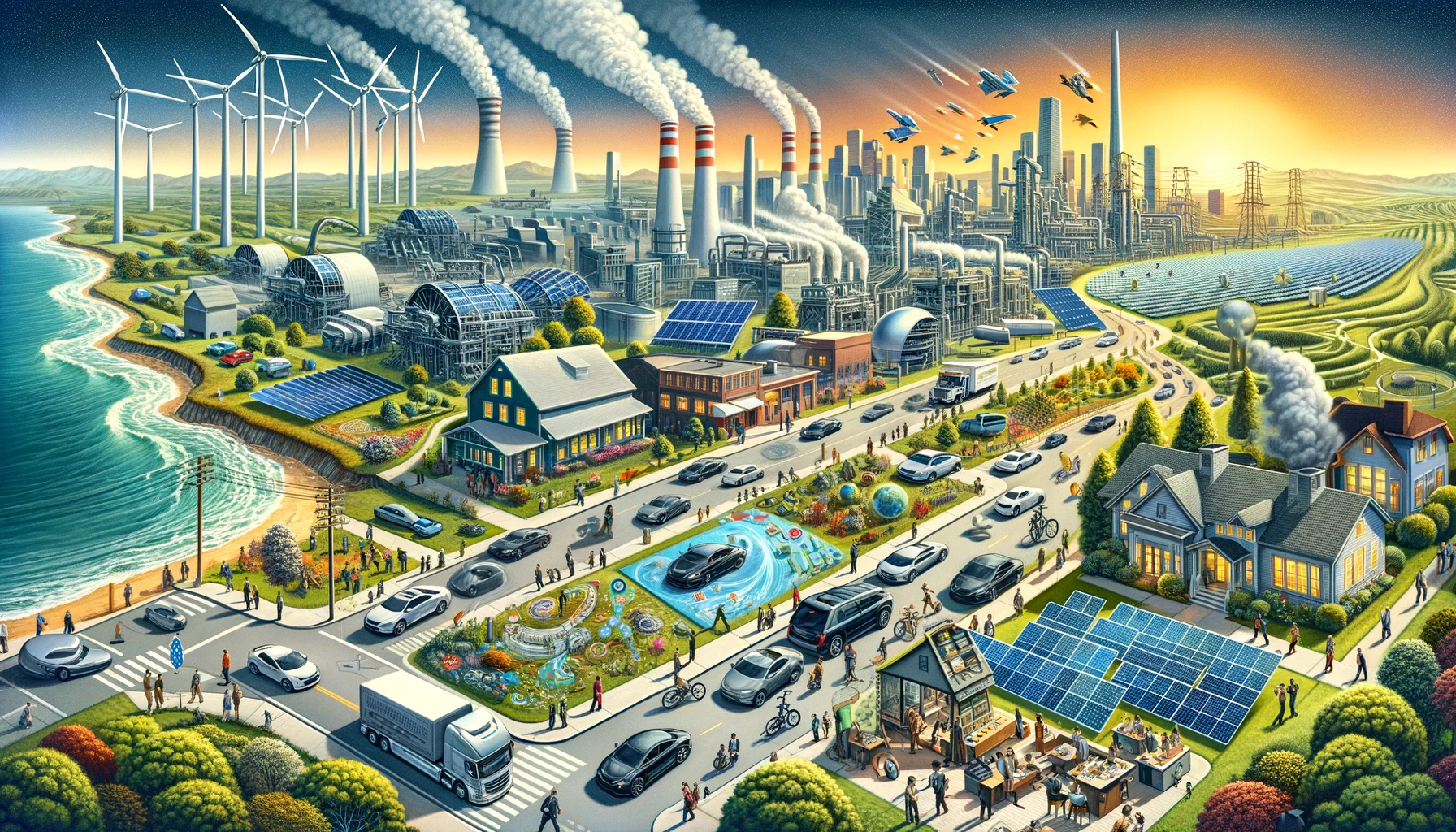
Renewable Energy and Coal Displacement
The shift towards renewable energy in the U.S. will reach a new milestone in 2024, with renewable energy sources like wind and solar projected to exceed coal in total electricity generation capacity. This is a significant shift, marking the first time renewable sources will collectively surpass traditional coal-fired power plants. Factors contributing to this development include aggressive renewable installation goals and favorable government policies, alongside economic factors like the declining costs of renewable technologies and cheaper natural gas prices, further undermine coal's competitiveness. The increase in renewable capacity includes substantial contributions from both large-scale wind farms and solar photovoltaic installations across various states, spurred by federal incentives and state-level renewable portfolio standards (SPGlobal)
Federal Policies to Support Clean Energy Manufacturing
The Inflation Reduction Act has played a pivotal role in reshaping the landscape of U.S. manufacturing towards cleaner technologies. The Department of the Treasury's recent guidelines offer incentives for utilizing domestically produced materials in clean energy projects. This includes a 'domestic content bonus' that enhances the value of tax credits for projects using American-made products such as steel and iron. This policy is designed to stimulate U.S. manufacturing sectors, create jobs, and reduce reliance on foreign materials, aligning with national energy independence and economic security goals. The initiative reflects a concerted effort by the government to support a transition to a more sustainable and domestically supported clean energy economy (N.C. Clean Energy Tech Center).
Growth in Electric Vehicle Adoption
North Carolina exemplifies the adoption surge of electric vehicle (E.V.) vehicles, reflecting a broader national trend driven by substantial state and federal support. Incentives include financial tax credits for purchasing new and previously owned E.V.s, significant investments in charging infrastructure, and regulatory support for cleaner transportation options. These incentives not only make E.V.s more accessible but also propel the demand for cleaner transportation solutions. The increase in E.V. adoption is part of a strategic effort to reduce the transportation sector's carbon footprint and promote sustainable urban mobility, contributing significantly to state and national environmental targets (N.C. Clean Energy Tech Center).
Energy Efficiency and Residential Incentives
Expanding incentives under the Inflation Reduction Act has significantly increased the accessibility of energy-efficient technologies for American homeowners. This includes a broader range of tax credits and rebates for installing renewable energy systems like solar panels and energy-efficient appliances such as heat pumps and smart home technologies. These incentives are mainly targeted to make sustainable technologies feasible for low and moderate-income households, ensuring broader participation in the transition to energy efficiency. The programs are structured to drive up-front cost reductions, making long-term savings on energy bills achievable and promoting wider adoption of green technologies across diverse communities (N.C. Clean Energy Tech Center).
California's Leading Role in Renewable Energy
California's leadership in renewable energy is reinforced by its comprehensive approach to production and consumption. The state produces significant electricity from renewable sources, including large-scale solar farms, wind installations, and hydroelectric facilities. California's energy policies have been crucial in managing its vast energy needs despite its massive economy and population. Efforts to reduce per capita energy consumption through stringent building codes, energy efficiency standards, and incentives for renewable energy use are central to the state's strategy. These efforts contribute to reducing the environmental impact and support California's economic objectives by fostering industries related to green technologies (EIA Energy Info).